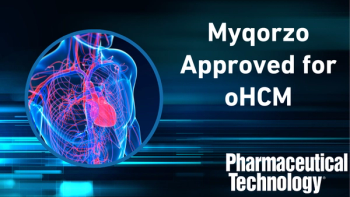
- Pharmaceutical Technology-03-02-2015
- Volume 39
- Issue 3
USP Publishes Monoclonal Antibody Guidelines
A General Chapter on mAbs will be published in USP-NF as biologics increase their role in healthcare.
As FDA gears up towards approving biosimilar drugs in the United States, it is unquestionable that the role of biologics has rapidly expanded in healthcare, raising questions and presenting crucial issues associated with their quality and efficacy. Unlike small-molecule medicines, which have more easily defined quality attributes and are relatively easy to characterize, biologics are large-molecule drugs, typically manufactured using living cells. Because biologic medicines range from simple structures like certain peptides to complex mixtures, such as vaccines, establishing meaningful quality attributes for each specific product can present challenges.
Besides serving a much reduced patient population because of their specific applications, biologics manufacturing requires living material and a much more complicated process than small-molecule synthesis, making a biologic drug naturally more costly.
USP standards for mAbs
Currently, licensed monoclonal antibody (mAb) therapeutics include those involved in the activation of effector cells, cell killing, cross-linked induced apoptosis, antagonism against several targets, and agonist antibodies. Because of structural similarities between antibodies of the same class, the United States Pharmacopeial Convention’s (USP) expert panel decided to focus its efforts in developing standards for mAbs on a class of molecules that would be more amenable to a “platform approach” both in terms of manufacturing and analytical development.
USP has been involved in developing quality standards for biologics as part of its expanding portfolio of monographs and general chapters for a long time. In 2012, USP started working on a clearly defined set of quality expectations for recombinant therapeutic mAbs, United States Pharmacopeia (USP) General Chapter <129> “Analytical Procedures for Recombinant Therapeutic Monoclonal Antibodies,” which is set to become official in USP’s compendia of standards, USP 39–National Formulary (NF) 34, on May 1, 2016.
As individual product monographs will possibly describe specific quality attributes of individual drugs, USP deemed it necessary to have a broad foundation of general standards to set minimum quality requirements for molecule classes, and that is what it hopes to achieve with the publication of the new general chapter.
General Chapter <129> provides analytical procedures for murine, chimeric, and humanized IgG isotype mAbs and subtypes (e.g., IgG1 and IgG2). Because subclasses show differences in amino acid sequence and in the number of disulfide bonds, in some cases they require subclass-specific analysis. IgG-type monoclonal antibodies have a molecular weight of approximately 150 kDa. Each molecule consists of two heavy and two light polypeptide chains that have a molecular weight of approximately 50 and 25 kDa, respectively.
This chapter includes purity assessments by chromatographic separation of size variants and capillary sodium dodecyl sulfate (CE–SDS) electrophoresis. In addition, it includes procedures for analysis of oligosaccharides in mAbs. The chapter also provides validated procedures and associated performance criteria for each of these.
Although the general chapter is focused on IgG-type mAbs, the principles of the tests included can apply to other related molecules, such as IgM or other isotype antibodies, antibody fragments, and Fc-fusion proteins. When the active substance is a conjugated antibody, such tests can be performed on the purified intact antibody before modification or conjugation.
The proposed new general chapter does not apply to mAbs used as reagents in the manufacture of medicinal products. Applicable requirements for those are determined by the appropriate regulatory agency.
USP reference standard
Accompanying the new general chapter is a recently-developed reference standard (RS). While this standard is not to be used for identification or to assign content, it has been developed to establish IgG system suitability. The material is an IgG1, 2mg/vial lyophilized presentation, which is used in the size-exclusion chromatography assay (SEC) and the capillary sodium dodecyl sulfate (SDS) electrophoresis (reduced and non-reduced) assays (CE-SDS), described in General Chapter <129>.
For SEC, the monoclonal IgG system suitability RS solution must meet the following system suitability requirements: the RS injections must bracket the injections of sample solutions and the RS chromatograms must be consistent with the typical chromatogram provided in the USP certificate; the area percent for the high molecular weight species (HMWS), the main peak, and the low molecular weight species (LMWS) must meet the criteria.
For CE-SDS (reduced and non-reduced), the Monoclonal IgG System Suitability RS solution must meet the following system suitability requirements: 1) the RS electropherograms must be consistent with the typical electropherograms provided in the USP certificate; 2) for reducing conditions, the main peak of the heavy chain (HC) must be clearly identified, the resolution criteria between nonglycoslylated HC and intact HC must be met, and the ratio of nonglycosylated HC to intact HC must be met; and 3) for nonreducing conditions, the IgG main peak must be clearly identified, the resolution criteria between IgG main peak and Fragment 1 must be met, and the area percent of main IgG peak must be met.
Article DetailsPharmaceutical Technology
Vol. 39, No. 3
Page: 24
Citation: When referring to this article, please cite it as D. Schmidt, et al., “USP Publishes Monoclonal Antibody Guidelines,” Pharmaceutical Technology39 (3) 2015.
Articles in this issue
almost 11 years ago
Vaccine Development and Production Challenges Manufacturersalmost 11 years ago
Europe Strives for a More Efficient Generic-Drug Approval Frameworkalmost 11 years ago
Kason Offers Screen Replacementalmost 11 years ago
GEA Homogenizer Offers Scalabilityalmost 11 years ago
PolyScience Chiller and Circulator Enhances Temperature Controlalmost 11 years ago
Ross Control System Increases Consistencyalmost 11 years ago
Industry Expert Q&A with Richard Grantalmost 11 years ago
Managing Supplier Data Collectionalmost 11 years ago
The Global Biomanufacturing Outsourcing Marketalmost 11 years ago
Lyophilization Cycle Optimization of Cell-Derived ProductsNewsletter
Get the essential updates shaping the future of pharma manufacturing and compliance—subscribe today to Pharmaceutical Technology and never miss a breakthrough.




